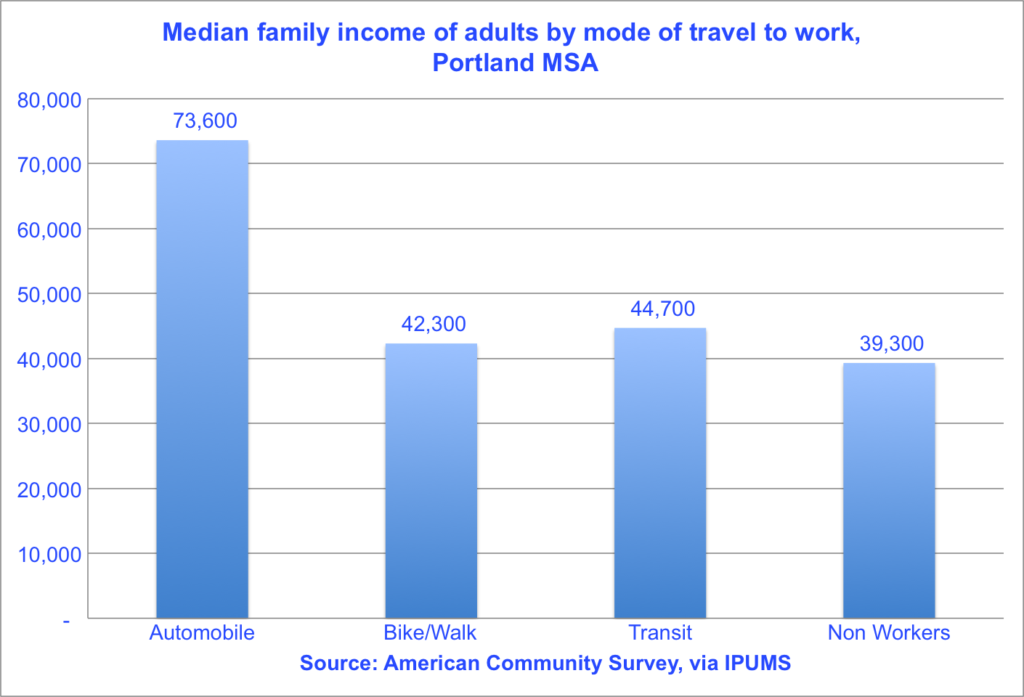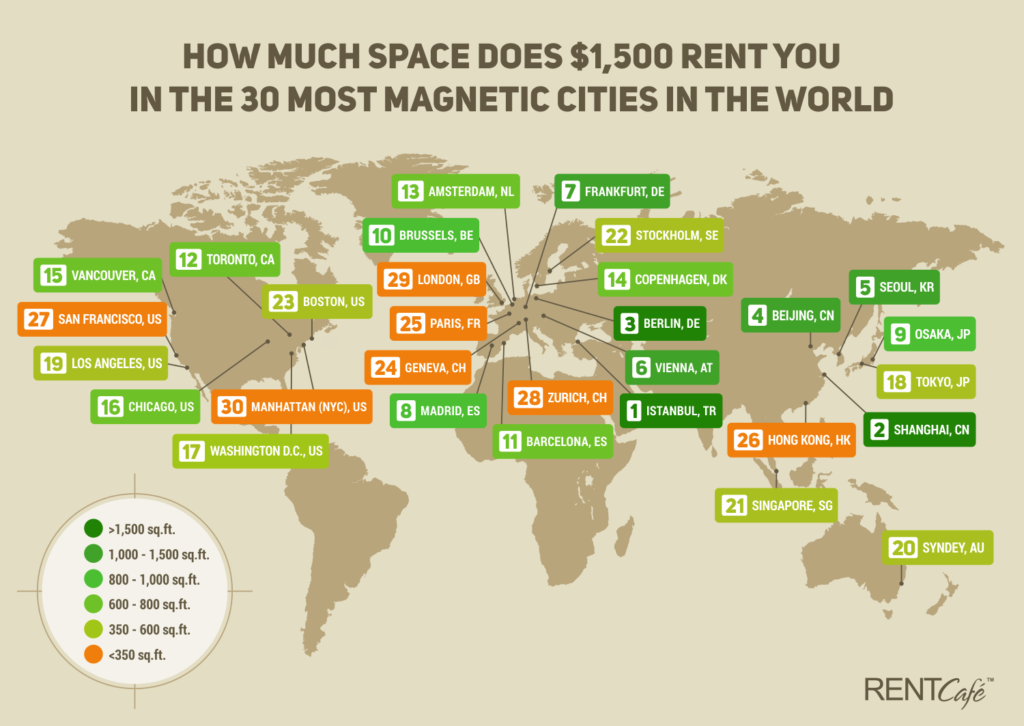What City Observatory did this week
1.Interim report card on Portland’s Inclusionary Zoning Ordinance: An Incomplete. Portland’s inclusionary zoning requirements have been in effect for six months. While the ordinance prompted a land rush of development applications filed under the old rules, private sector apartment applications have almost completely evaporated since then. We take a close look at how the ordinance changes the incentives for development, and how it will likely lead to fewer and smaller apartments in Portland in the years ahead, and as a result end up compounding rather than reducing the city’s affordability problems.
2. Transportation Equity: Why peak hour pricing is fair and progressive. Portland’s planning to implement road pricing for its freeways, and some are raising concerns that tolling could be an undue burden on low income workers. We take a close look at Census data on the average incomes of workers both by transportation mode and by the time they travel. In metro Portland, car commuters have incomes that average about 70 percent higher than those who walk, bike or ride transit. In addition, peak hour drivers have median incomes over $80,000, more than 20 percent higher than those who drive to work during off-peak hours. This suggests that peak hour drivers–who are the most expensive travelers to serve–have higher incomes and greater ability to pay than the rest of the region’s residents.
Must read
1. International rent comparisons. Most of the rankings we see of variations in rental costs compare one US city against others. RentCafe has broadened its horizons to ask how much the equivalent of US$ 1,500 will buy you in the way of an apartment in large cities around the world. The most expensive markets are Manhattan, London and Zurich, where your $1,500 will get you barely 300 square feet (a tiny studio). But in other large cities, you get a lot more for your money: in Vienna, Frankfurt and Seoul, your $1,500 will get you more than 1,000 square feet. Not only does this page summarize findings for 30 of the most “magnetic” cities in the world, RentCafe has thoughtfully linked to some local rental listings websites, like locservice.fr, rentswatch.com and propertyguru.com.sg, that let you drill down to neighborhood level data for each of these cities.
2. Is population growth a good metric of urban success? An essay at Governing questions whether population growth, by itself, is an indicator that a city is succeeding. It’s routine in the media to call some cities “winners” if they’re gaining population, and other’s “losers” if they’re not growing as fast, but research by Paul Gottlieb and others shows that wealth and economic success of cities isn’t necessarily correlated with population growth. Some fast growing places have fragile, un-sustainable economies; some slower growing places are building wealth and improving the quality of life of their residents. While chronic population loss is usually a measure of a failing city, the level of population growth may be only a weak, and partial correlate of successful places.
3. How rent control affects housing supply. Toronto has adopted rent control that limits annual rent increases for most apartments to 2.5 percent annually. Previously, the rent control requirement had applied only to apartments built prior to 1991, with newer construction exempted from the law, in theory to incentivize additional supply. But as often happens with rent control, promises to exclude new construction from controls can be rescinded. Predictably, developers and apartment owners are seeking alternatives to avoid the law. According to the Globe and Mail, more than 1,000 planned rental units have been converted into for sale condominiums (which aren’t covered by rent control), and other developers are “reviewing” whether to go forward with planned projects.
4. “Snob zoning is racial housing segregation by another name.” The title of Elizabeth Winkler’s column in the Washington Post’s Wonkblog pretty much says it all. Municipal bans on small lot single family homes and on apartments are a thinly veiled means of excluding people of color from economic access to suburbs. “The laws do not specifically mention race, but because African-Americans and Latinos have on average far less wealth and income than white people, the laws do tend to drive people of color out and keep neighborhoods more uniformly white. ”
New Research
Food Deserts: Recasting poverty as a real estate problem. Laura Wolf-Powers has a critical essay questioning the rise of the “food desert” framing of poverty and hunger in cities. In her view, the food deserts concept leads to policy interventions that emphasize real estate over directly addressing the lack of income of the urban poor. It makes little sense, in her view, to subsidize grocery stores while we are cutting funding for programs like Supplemental Nutritional Assistance Program (SNAP). A focus on real estate distracts attention from policies to raise wages and incomes.



